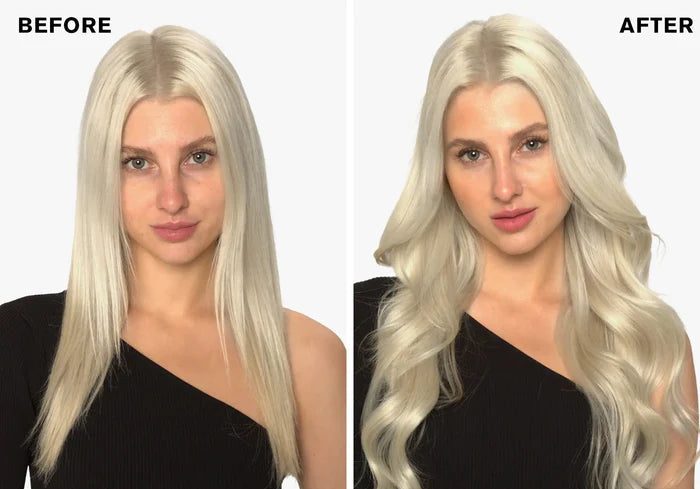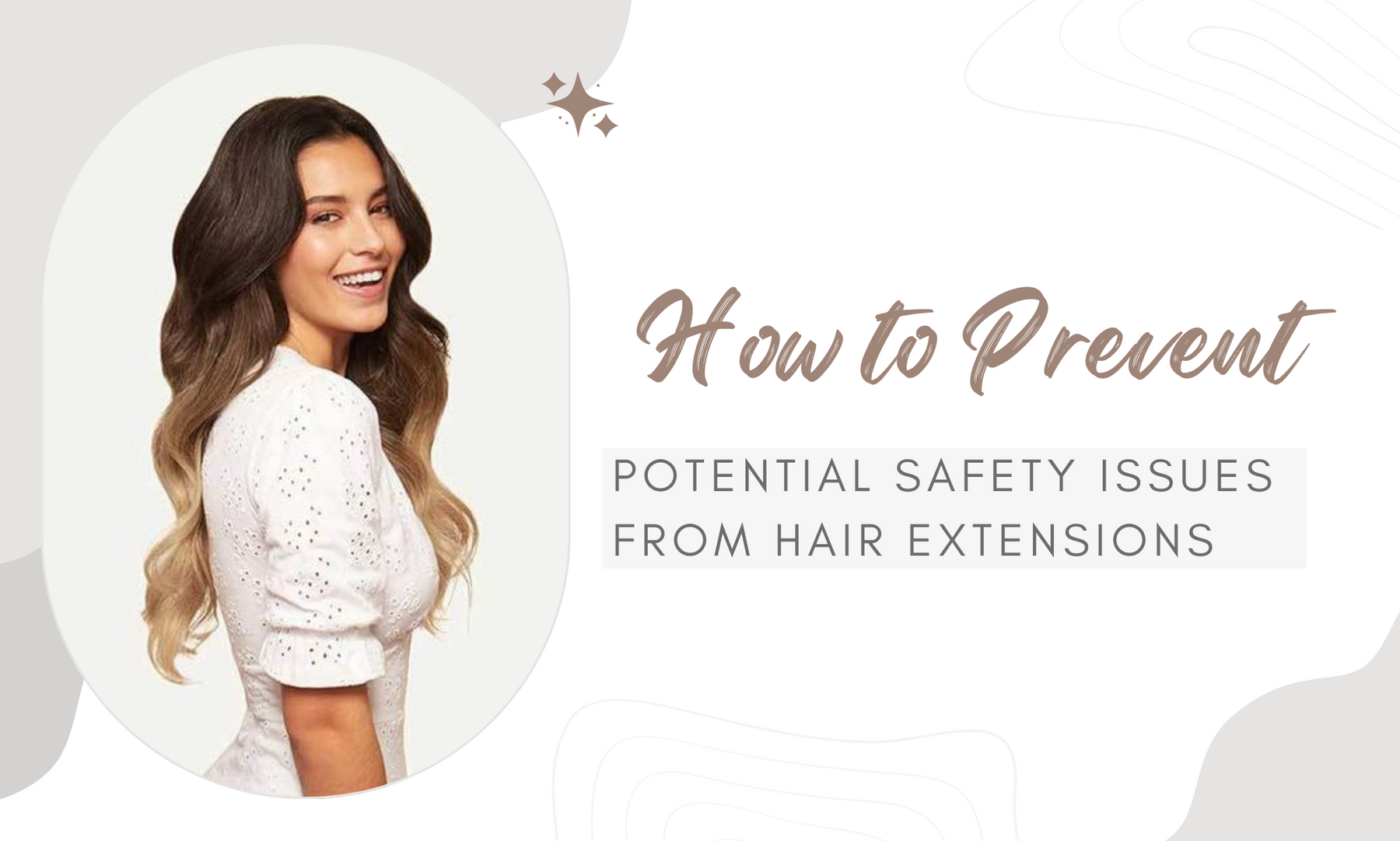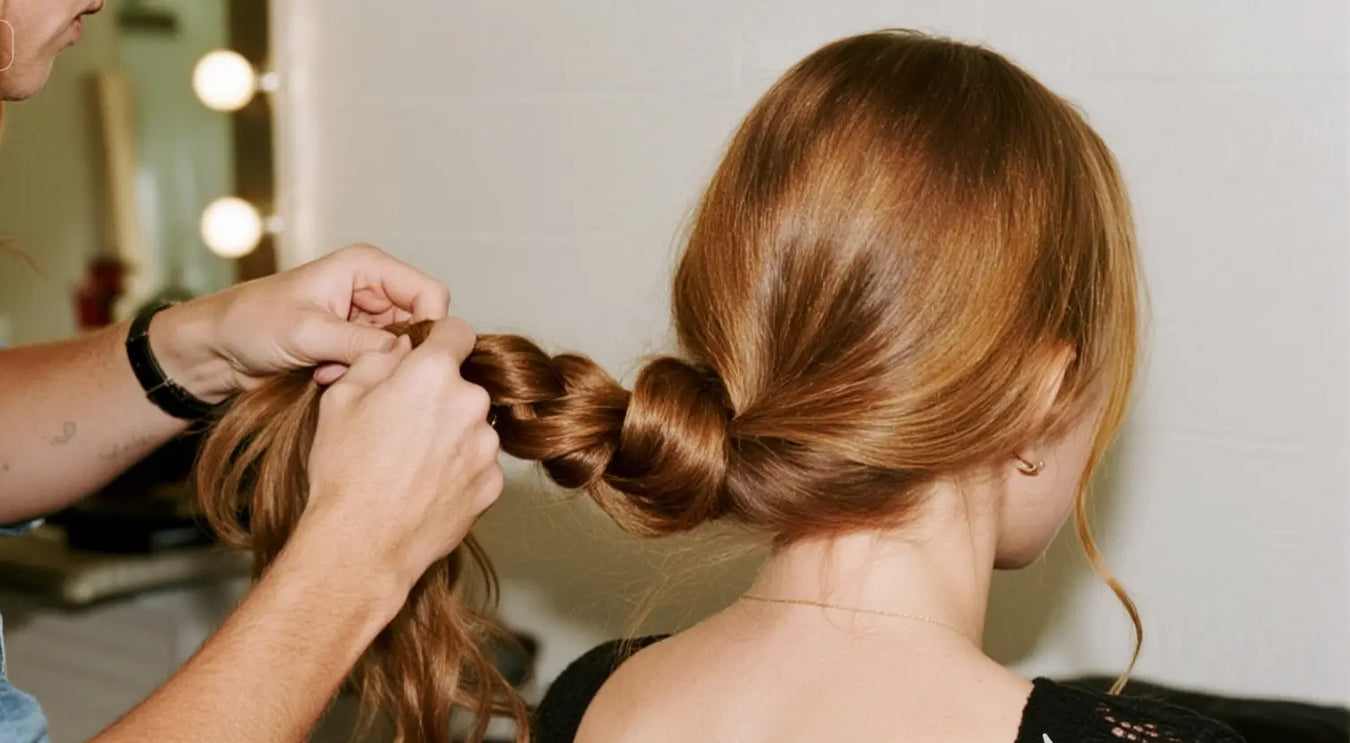Hair extensions have become a popular trend for adding length, volume, and style to one's hair. While they offer numerous benefits, it's essential to be aware of the potential safety concerns that may arise from their use.
In this blog post, we will discuss some common safety issues associated with hair extensions, including allergic reactions, hair root damage, and extension shedding. We will also provide preventive measures and important precautions to help you maintain healthy and safe hair.
Allergic Reactions
Some individuals may experience allergic reactions to certain materials used in hair extensions, such as adhesives or synthetic fibers. To prevent allergic reactions, consider the following
-
Choose High-Quality Extensions: Opt for high-quality, hypoallergenic hair extensions. Synthetic extensions might contain chemicals that can trigger allergic reactions, so you might want to consider natural human hair extensions as they are less likely to cause issues.
-
Patch Test: Before proceeding with a full application, request a patch test for any glue, dye, or hair treatment product that will be used. This involves applying a small amount of the product to your skin, typically behind the ear or on the inner forearm, and waiting 24-48 hours to see if there's any adverse reaction.
-
Inquire About the Adhesive: Ask your stylist about the type of adhesive or bonding agent used. Some people might be allergic to latex or certain chemicals found in the bonding glue. There are hypoallergenic glues available that might be a safer option.
-
Communicate Any Past Reactions: If you have a history of skin sensitivity or allergic reactions, inform your stylist before they begin the application process. They can select products and techniques that minimize the risk of an allergic reaction.
-
Aftercare: Follow the aftercare instructions provided by your stylist carefully. Keeping the scalp clean and avoiding harsh products can prevent irritation and allergic reactions post-application.
-
Professional Application: Always have your hair extensions applied by a professional in a reputable salon. They are trained to apply extensions in a way that minimizes damage and potential allergic reactions.
-
Limit Chemical Treatments: Try to minimize the number of chemical treatments you get in conjunction with your hair extensions, as the combination of treatments can increase the risk of an allergic reaction.
By taking these precautions, you can significantly reduce the risk of experiencing an allergic reaction to hair extensions.
Hair Root Damage
Improper installation or removal of hair extensions can lead to hair root damage. Protect your natural hair and scalp with these preventive measures
-
Choose a Professional Stylist: Opt for a professional stylist experienced in hair extensions to ensure proper application without damaging the roots.
-
Limit Tension: Request your stylist to avoid applying excessive tension to your roots during the extension process. Gentle handling minimizes the risk of root damage.
-
Regular Maintenance: Schedule regular maintenance appointments with your stylist to adjust the extensions and alleviate any stress on the roots. This helps prevent long-term damage.
-
Proper Installation: Ensure that the extensions are properly installed, allowing natural hair movement and growth without pulling or tugging on the roots.
-
Healthy Scalp Care: Prioritize scalp health by maintaining a clean and moisturized scalp. Regularly washing and conditioning your hair and scalp can promote a healthy environment for natural hair growth.
-
Avoid Heavy Extensions: Opt for lightweight extensions to minimize strain on the roots. Heavy extensions can weigh down the hair, leading to increased tension and potential damage.
-
Be Mindful of Removal: When it's time to remove the extensions, have them removed by a professional to minimize the risk of pulling or tearing out natural hair.
-
Take Breaks Between Extensions: Give your hair a break between extension applications to allow your natural hair to rest and recover. Overlapping extensions without breaks can lead to excessive tension on the roots.
-
Consult with Your Stylist: Discuss any concerns or questions about hair extension maintenance and care with your stylist. They can provide personalized advice based on your hair type and condition.
-
Monitor Hair Health: Keep an eye on the health of your natural hair and roots. If you notice any signs of damage or discomfort, consult with your stylist promptly to address the issue and prevent further damage.
Remember, any discomfort or pain associated with hair extensions should not be ignored. Consult a professional hairdresser promptly for advice.

Extension Shedding
Hair extensions, especially low-quality ones or those not properly maintained, may experience shedding. To minimize extension shedding, follow these tips
-
Choose High-Quality Extensions: Opt for extensions made from 100% human hair or high-quality synthetic materials to minimize shedding. Invest in good-quality extensions that are securely attached to your natural hair.
-
Gentle Handling: Treat your hair extensions gently, avoiding excessive pulling, tugging, or rough handling, especially when brushing or styling.
-
Use Suitable Products: Use sulfate-free and gentle hair care products specifically formulated for extensions to maintain their integrity and minimize shedding.
-
Avoid Heat Damage: Minimize the use of heat styling tools such as straighteners and curling irons, as excessive heat can weaken the bonds of the extensions, leading to shedding.
-
Protective Styling at Night: Before bedtime, braid or tie your hair in a loose bun to prevent tangling and friction, which can contribute to shedding.
-
Be Mindful During Activities: Avoid activities that may put stress on the extensions, such as vigorous exercise or swimming in chlorinated water, without proper protection or precautions.
-
Regular Detangling: Gently detangle your hair extensions using a wide-tooth comb or a special detangling brush designed for extensions to prevent knots and breakage.
-
Proper Removal: When it's time to remove the extensions, follow the recommended removal process carefully to minimize pulling and damage to your natural hair.
By following these tips, you can help minimize shedding and keep your hair extensions looking beautiful and healthy for longer periods.

General Maintenance and Hygiene
-
Regular Washing: Wash your hair extensions regularly with a mild shampoo and conditioner. Be gentle while washing to avoid tangling and matting.
-
Detangling: Use a wide-tooth comb or a special brush designed for hair extensions to detangle them gently, starting from the bottom and working your way up.
-
Avoid Heat Damage: Minimize the use of heat styling tools such as straighteners, curling irons, and blow dryers. If you must use them, apply a heat protectant spray beforehand.
-
Protective Styles at Night: Before going to bed, braid your hair or put it in a loose ponytail to prevent tangling while you sleep.
-
Avoid Chlorine and Saltwater: Chlorine and saltwater can damage hair extensions, so try to avoid swimming in pools or the ocean. If you do swim, wear a swim cap or rinse your hair with fresh water afterward.
-
Trim Regularly: Trim the ends of your hair extensions every 6-8 weeks to prevent split ends and maintain a healthy appearance.
-
Use Quality Products: Invest in high-quality hair care products specifically formulated for extensions. Avoid products containing sulfates and alcohol, as they can strip the hair of its natural oils and cause dryness.
-
Avoid Oily Scalp: While it's essential to keep your hair extensions moisturized, avoid applying heavy oils or serums directly to the roots, as this can lead to buildup and make the extensions look greasy.
-
Protect from Sun Damage: Excessive sun exposure can cause color fading and dryness, so protect your hair extensions by wearing a hat or using a UV protectant spray.
-
Regular Maintenance: Visit your hairstylist regularly for maintenance appointments, such as tightening or repositioning the extensions, to ensure they remain secure and look their best.
Following these tips can help you keep your hair extensions healthy and beautiful. If you have any questions or require further advice, it is recommended to consult a professional hair extensions specialist or hairdresser.

In conclusion, while hair extensions can enhance your hair's appearance, it's crucial to prioritize safety. By following the preventive measures and precautions mentioned above, you can enjoy the benefits of hair extensions while minimizing potential risks. Be informed, be cautious, and maintain healthy and beautiful hair.








